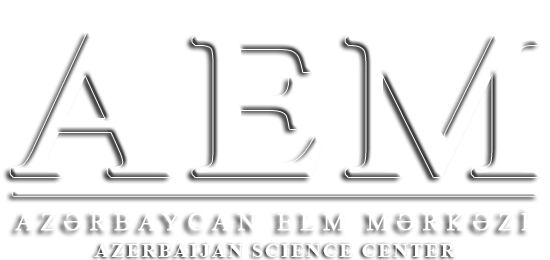Arxiv
2024 Ярослав Валентинович Пилипчук
доктор исторических наук
Национальный педагогический университет им. М. П.Драгоманова
Киев, Украина
О ВОЕННО-ПОЛИТИЧЕСКОЙ ИСТОРИИ ВАЙНАХСКИХ НАРОДОВ
В ДРЕВНЕЕ ВРЕМЯ И СРЕДНЕВЕКОВЬЕ
В ДРЕВНЕЕ ВРЕМЯ И СРЕДНЕВЕКОВЬЕ
Ключевые слова: вайнахи, дурдзуки, чеченцы, ингуши, чеченские владения, Грузия, Малая Кабарда, вольные общества.
About military-political history of Vainakh people in Ancient Times and Middle Ages
Summary
This paper is dedicated to the reconstruction of ethnic and political history of the Nakhs in the Ancient Times, Middle Ages and Early Modern Times. Several Nakh tribes were known mainly to Georgians and Armenians. Nakhs were the main population of Georgia until the 4th century BC. The formation of the Iberian kingdom (Kartli) was closely connected with the interaction of the Kartvelian peoples with the nakhs of the South Caucasus, which appeared in Georgian sources under the name Durdzuks. The Nakhs were confronted with Scythians, Sarmatians, Alans n the North Caucasus. Therefore, Nakhs were better known in the South Caucasus. The most notable of the Durdzuk cluster was the tribe of the Tsanars. During the VIII-IX centuries Tsanars actively resisted the Arabs. The Tsanar chorebishop was one of the titles of the king of Kakheti and they actively participated in the Kakheti wars with the Abkhaz, Kartli, and Tao-Klardzhet kings. The final Kartvelization of the tsanars dates back to the XI century. Tushins, Pshavs, Khevsurs were kartvelized in the end of the XII century. Only the Batsbians retained the Nakh identity. Ethnonym Dzurzuk from the XIII century ceased to denote the Nakh population of the South Caucasus, which began to be designated by Kistins and Batsbians. Durdzuks from the XIII century these are the nakhs of the North Caucasus. The North Caucasian nakhs were ruled by the Alan kings in the XI-XIII centuries. Mongol invasion in XIII century weakened the power of the Alans over the North Caucasus. The territory of Chechnya united the Nakh state of Simsim in the middle of the XIV century, which at the end of the XIV century attacked by the Chagatays of Timur. Establish Georgian power over the highlanders in the middle of the fourteenth century. And in the 30s. XVII century Georgian kings Giorgi V and Teymuraz tried. Their real power was only over Georgian highlanders (Pshavs, Khevsurs, Tushins) and Batsbians. Kabardinians made a big campaign against the Nakhs in the middle of the XVI century. Temruk Idarov during the campaign of 1563 used the help of Nogays and Russians. Kabardinians entered the Sunzha region and drove the Ingush into the mountains. In the mountains was the possession of the Ingush Lars. The first of the Chechens to contact the Russians were the rulers of Aukh (Okoks of Russian sources). Some part of the Okoks in the XVII century evicted from Aukh on a plane to the area of Terek and Sunzha. The population of the Chechen possession obeyed the princes Turlovs from Gumbet. The people of Nokhch-Mokkh often opposed the Russians in the XVII century. There are some reasons to believe that they depended on the Kumyk rulers of the Andirean beilik. Avars and Kumyks also contributed to the penetration of Islam to the Chechens. Shibutians (Shatoys) and Chantiyans actively contacted Russians. Russian influence until the middle of the XVIII century it was rather nominal and was manifested in the presence of Cossacks and Streltsy on the Terek and Sunzha and in the exchange of embassies with Georgia. Not a single regional state such as the Safavid state or the Crimean Khanate has succeeded in establishing its power in the Central Caucasus. Chechens used vassality from the Russians as a counterweight to the influence of the Crimean Khanate and the Afshar state in the first half of the XVIII century, but this did not interfere with their situational alliances with the Kumyks and Crimean Tatars against the Russians. Chechens actively supported Islamic fanatics. Strengthening Russian power in the North Caucasus in the second half of the XVIII century led to the fact that the Ingush took Russian citizenship. There have been social changes in Chechnya. Societies drove out their princes. In this situation, the Chechens and other peoples of the Caucasus made an attempt to unite Sheikh Mansur. An attempt to unite Chechnya was also undertaken in the XIX century by Beibulat Taimiev.
Key words: Vainakhs, Durdzuki, Chechens, Ingushes, Chechen domain, Georgia, Minor Kabarda, free societies
MƏQALƏNİ YÜKLƏ
[554,19 Kb] (yüklənib: 21)
Baxış:
573

